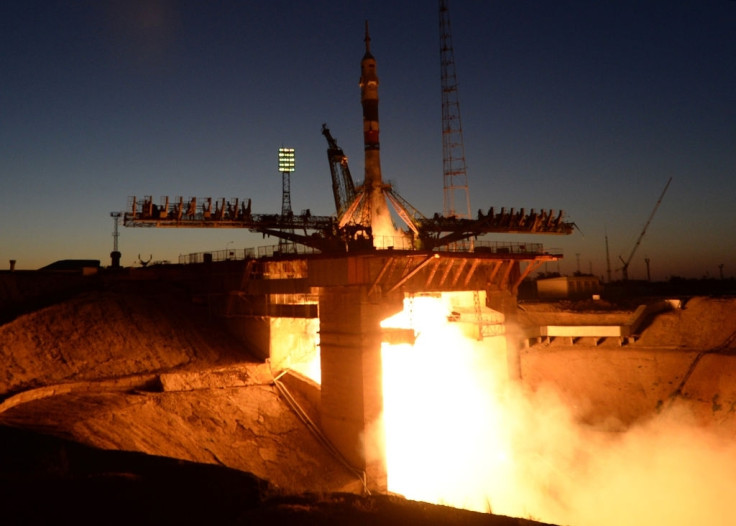Soyuz MS-05: Manned Russian spacecraft sucessfully docks with International Space Station
The spacecraft carried astronauts from Nasa, Roscosmos, and ESA to ISS on Friday.

Six hours after blasting off from Baikonur Cosmodrome in Kazakhstan, Russia's manned Soyuz MS-05 spacecraft successfully docked with the International Space Station on Friday, 28 July.
The launch kicks off a near five-month mission for Nasa's Randy Bresnik, Sergey Ryazanskiy of Roscosmos and Paolo Nespoli of ESA (European Space Agency), who will conduct approximately 250 science investigations in fields such as biology, Earth science, human research, physical sciences and technology development.
Soyuz docked at the Earth-facing Rassvet module of the space station after orbiting the Earth four times. Then, after standard pressurization and leak checks, the hatches between the spacecraft and ISS were opened, allowing the new crew to join Expedition 52 Commander Fyodor Yurchikhin of Roscosmos, Nasa's Jack Fischer and Flight Engineers Peggy Whitson who all have been helming the station since June 2.
Fischer, who will be returning with Whitson and Yurchikhin in September, also captured a stunning photo of the Soyuz launch as it appeared from the space station.
Got an interesting pic of the launch… @AstroKomrade, @Astro_Paolo & @Ryazanskiy_ISS are now on our six! See you in a few hours guys! pic.twitter.com/7wZn09oNjM
— Jack Fischer (@Astro2fish) July 28, 2017
During the post-docking conference with friends and family on the ground, Bresnik said, "That was the most amazing, smooth rocket ride I've ever had. I would really like to say thanks, on behalf of [the Soyuz MS-05 crew], to our Russian colleagues and Russian partners who made such a beautiful vehicle".
The arrival has restored the population of the orbital lab to six, with two cosmonauts, three Nasa astronauts, and one from a partnering space agency. But, this is different from the usual mix of astronauts for the station. Previously, Roscosmos sent astronauts to the station, but this time the agency has reduced its crew component, giving US an opportunity to send in an extra crew member to the ISS.
According to Nasa, the newly expanded crew will conduct several investigations over next few months including a study of the pathology of Parkinson's disease to aid in the development of therapies for patients and a lung tissue study using microgravity for further use of the microgravity environment in stem cell research.
The astronauts will also deploy "a microsatellite investigation seeking to validate the concept of using microsatellites in low-Earth orbit to support critical operations, such as providing lower-cost Earth imagery in time-sensitive situations such as tracking severe weather and detecting natural disasters".
© Copyright IBTimes 2024. All rights reserved.





